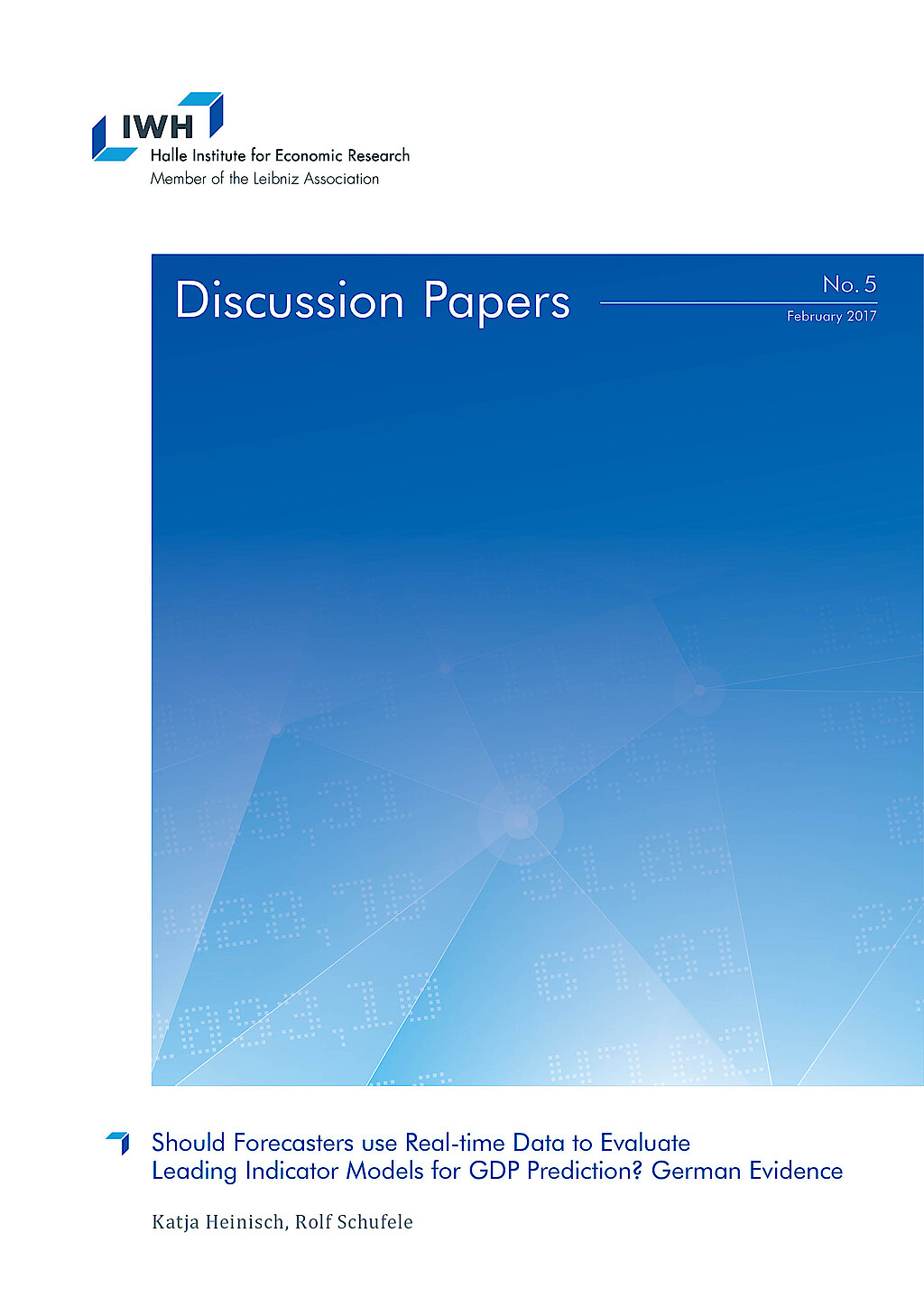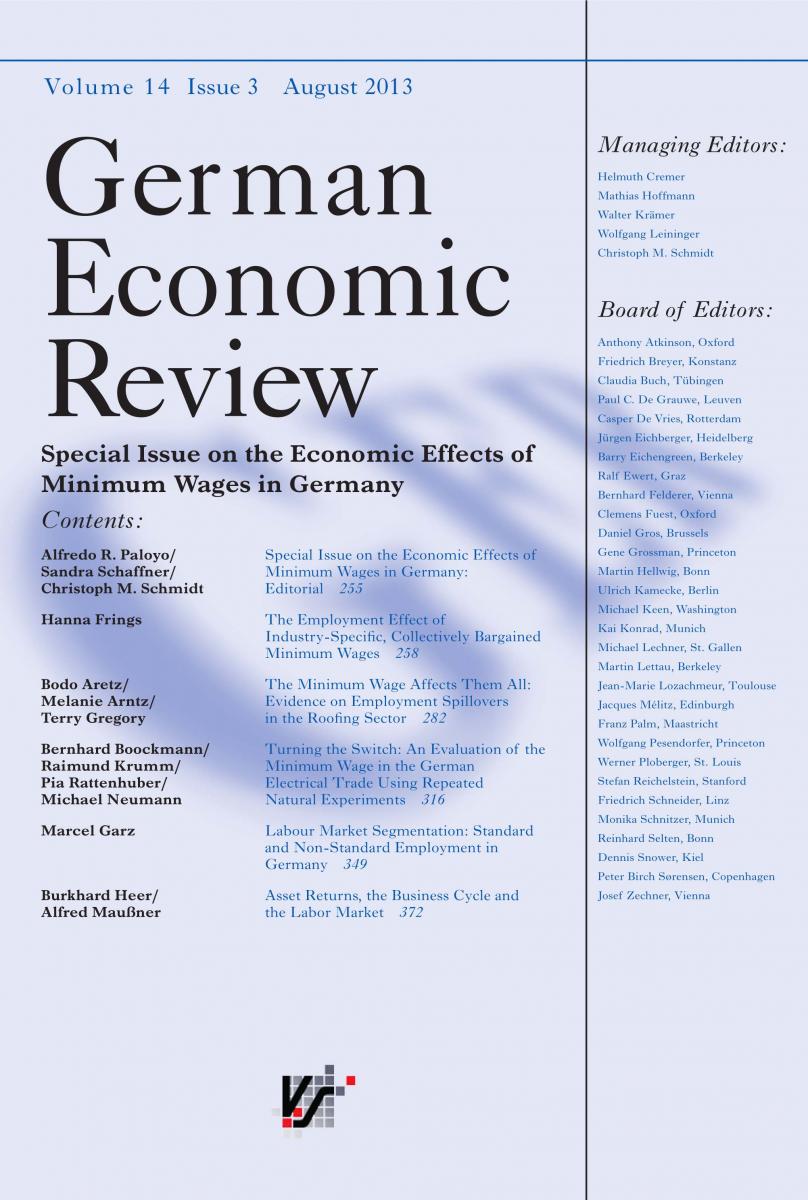
Should Forecasters Use Real-time Data to Evaluate Leading Indicator Models for GDP Prediction? German Evidence
In this paper we investigate whether differences exist among forecasts using real-time or latest-available data to predict gross domestic product (GDP). We employ mixed-frequency models and real-time data to reassess the role of survey data relative to industrial production and orders in Germany. Although we find evidence that forecast characteristics based on real-time and final data releases differ, we also observe minimal impacts on the relative forecasting performance of indicator models. However, when obtaining the optimal combination of soft and hard data, the use of final release data may understate the role of survey information.






